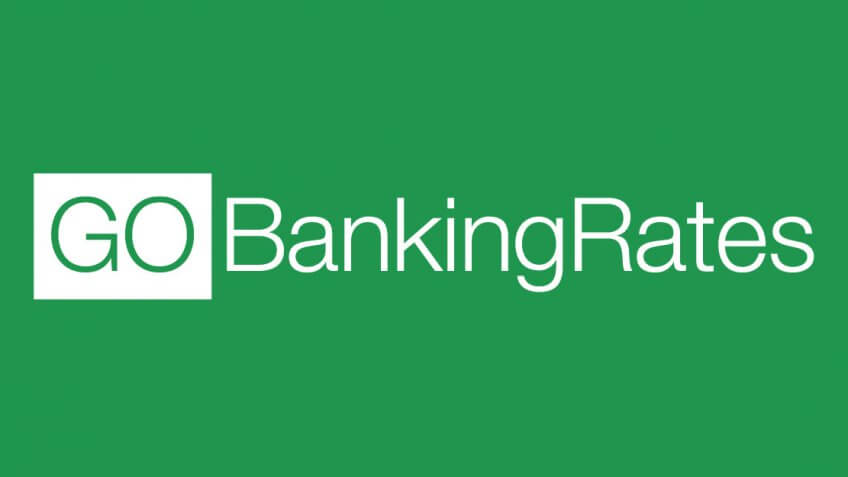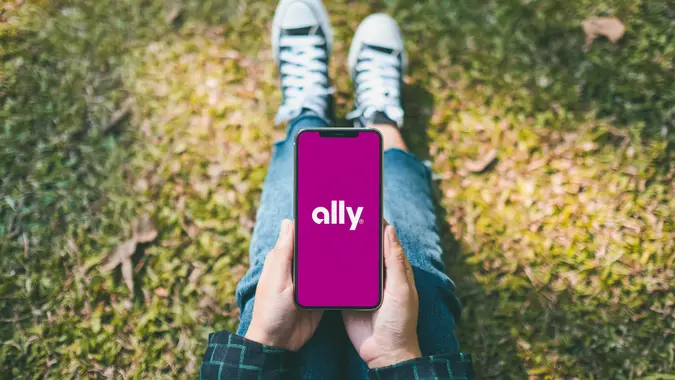Best 6% Interest Savings Accounts Offers of 2025

Commitment to Our Readers
GOBankingRates' editorial team is committed to bringing you unbiased reviews and information. We use data-driven methodologies to evaluate financial products and services - our reviews and ratings are not influenced by advertisers. You can read more about our editorial guidelines and our products and services review methodology.

20 Years
Helping You Live Richer

Reviewed
by Experts

Trusted by
Millions of Readers
High-yield savings accounts offer competitive interest rates, typically ranging from 4.50% to 5.00%. While these rates are attractive, some institutions now offer even higher rates, reaching up to 6%. These 6% interest savings accounts aren’t easy to find, but for the first time in decades, they are available at credit unions.
Which Credit Unions Gives 6% Interest on Savings Accounts?
While a 6% interest rate on high-yield savings accounts is uncommon, there are two financial institutions currently offering this rate. Digital Federal Credit Union and Boeing Employees Credit Union are offering a APY and , respectively, on savings accounts.
Here is a comparison table of both credit unions and their features:
| Feature | DCU | BECU |
|---|---|---|
| APY | – APY on balances up to $1,000 – Balances above $1,000 earn 0.05% APY |
– APY on the first $500 – Balances above $500 earn APY |
| Minimum deposit | $5 | None |
| Monthly fee | No | No |
| Required credit union membership | Yes | Yes |
| NCUA member | Yes | Yes |
| Debit card | No (only with checking account) | Yes |
| Excessive transaction fee | No | No |
As of this writing, no banks are offering at least 6% APY on high-yield savings accounts. Generally, though, online banks will have higher APYs on their high-yield savings accounts because of lower overhead. However, brick-and-mortar banks may offer in-person personalized service that online banks can only provide on the phone or in a chat.
Eligibility Requirements for 6% APY Savings Accounts
There may be several eligibility requirements to qualify for a 6% APY savings account. Knowing what these requirements are will help you decide if you qualify to open this specific account. You should contact specific banks or financial institutions about additional requirements for qualifying for a 6% savings account.
Credit Union Membership
To be eligible for a savings account at a credit union, you have to become a member first. For DCU, membership is limited to individuals who live in a select area of Massachusetts, live in a New Hampshire participating condominium community, work for a Select Employer or belong to a specific local organization.
For BECU, you need to meet one of the following criteria:
- Live in Washington
- Live in select counties in Oregon and Idaho
- Live in South Carolina and visit the North Charleston Neighborhood Financial Center by donating $1 or more to support the BECU Foundation.
- Be a current or retired employee of Boeing, credit unions, BECU itself, or members of specific organizations
- Be a relative who is an existing BECU member
Account Balances
The 6% APY applies only to certain balances. For example, DCU’s APY applies only to balances below $1,000. Balances above $1,000 earn only APY.
Direct Deposits
Some savings accounts require a direct deposit to qualify for a specific rate.
Maintenance Fees
Be aware that maintenance fees may apply to certain accounts to receive your APY.
Key Features to Look for in a 6% APY Savings Account
You certainly want to prioritize certain features when deciding which 6% APY savings account works for you. Here’s a list of features you should look for:
- APY stability: Is the 6% APY a promotional offer, or is it for the long term?
- APY on higher balances: Decide whether the cap on APY on higher balances is favorable to your financial situation. Typically, once you reach the cap on how much you can earn at 6%, APYs are significantly lower for higher balances.
- FDIC or NCUA-insured: Make certain your high-yield savings account is insured.
- Monthly maintenance fees: Decide whether the monthly maintenance fees are affordable for your financial situation.
- Minimum balance: Some savings accounts require you to maintain a minimum balance to earn an advertised rate. Make sure this fits with your day-to-day finances.
- Withdrawal limits: Look at whether there are restrictions on how often you can withdraw funds from your account.
- Hidden fees: Read the fine print to find out what additional fees could be charged to you.
- Customer support: How accessible is customer support? Can you call 24/7? Are there in-person locations? Find out what customer options are available so you know who to contact in case of an issue.
- Mobile banking: If you’re someone on the go who likes to monitor your account via a mobile app, check the app’s rating on the Apple Store or Google Play to find out where your bank or credit union stands.
Pros and Cons of 6% High-Yield Savings Accounts
Although a 6% APY on a high-yield savings account seems too good to pass up, there are pros and cons associated with these financial products.
Pros
- Competitive APYs: Your money grows faster with an APY of 6% compared to most traditional and high-yield savings accounts.
- NCUA or FDIC-insured: Funds are insured up to $250,000 per depositor, per category by the NCUA or FDIC.
- Liquidity: With a savings account, you can access your cash without incurring a penalty.
- Emergency savings: This account can be a good option for building an emergency fund.
Cons
- Limited availability: Finding a high-yield savings account with a 6% APY is rare. Most accessible savings accounts offer lower APYs.
- Cap on earning a 6% APY: Most 6% APY high-yield savings accounts cap a specific balance that can earn this high APY.
- Membership requirements: To qualify for a high-yield savings account, you will need to fulfill credit union membership requirements first.
- APYs substantially decrease on higher amounts: Once you meet the balance cap eligible to earn the high APY, higher balances will likely have a substantially lower APY.
How To Open a 6% Interest Savings Account
You should gather research on the banks and credit unions that offer this rate. Before you apply, take note that some accounts may require membership in specific organizations or fulfillment of certain criteria.
To open any savings account, you need a state-issued government ID or passport, your Social Security Number and proof of your address. You will also need to have the required amount to fund your account.
Strategies to Maximize Your 6% Savings Account
If you have a savings account that is paying you a high APY, you certainly want to use strategies to maximize your savings. Some of those strategies can be easy to implement, especially if you can automate certain options.
Set Up Direct Deposits
Certain savings accounts may require you to have direct deposit set up to receive the high APY.
Keep Track of Fees
You don’t want to chip away at your nest egg by paying unnecessary fees. Know the fees your bank charges — such as monthly service fees, overdraft and withdrawal limits. Look for ways to avoid them if possible, such as maintaining a minimum balance. You can also search for fee-free accounts.
Leverage Multiple Accounts
If the high rate applies only to a small balance, consider opening multiple high-yield accounts across different institutions.
Be Aware of Rate Changes
High-yield savings accounts often have rate changes. Being aware of higher rates elsewhere may help you determine if it’s time to shift your funds into a different account.
Alternatives to 6% APY Savings Accounts
Since 6% APY savings accounts are hard to find, you may be better off looking at alternate ways to save. These options include other high-yield savings accounts, CDs and money market accounts.
Other High-Yield Savings Accounts
It is more common to find high-yield savings accounts with APYs that are between 4.00% to 5.00%. Typically, these accounts don’t have a cap on balances eligible to earn higher APYs.
Western Alliance Bank offers a high-yield savings account with a minimum deposit of $500 and an APY of .
Bread Savings offers a high-yield savings account with a $100 minimum and a APY.
Certificates of Deposit
A certificate of deposit will traditionally offer higher interest rates than a savings account. But there is a trade-off because you may not be able to access your money before the CD’s term ends without penalties or early withdrawal fees.
If you are comfortable keeping your money locked away for the length of a term — for example, in a 3-month, 6-month, 1-year CD or even longer — you can earn 5% or more on a CD.
Money Market Accounts
You’ll want to opt for a money market account instead of a 6% APY savings account, especially if you carry larger balances. Some money market accounts also allow you to write checks and have debit card access. If you need an account with liquidity with a steady return, consider whether or not a money market account is better suited than a 6% high-yield savings account.
Is a 6% Interest Savings Account Right for You?
If you have a smaller balance and can meet the criteria for a 6% savings account, it may work for short-term financial goals. If you carry a larger balance and don’t want a significant rate reduction, consider another high-yield savings account or a CD.
It is best to read the fine print when you’re considering any savings option and have a good handle on your overall financial strategy when choosing a product.
Dawn Allcot contributed to the reporting for this article.
Rates are subject to change; unless otherwise noted, rates are updated periodically. All other information on accounts is accurate as of Feb. 27, 2025.
Editorial Note: This content is not provided by any entity covered in this article. Any opinions, analyses, reviews, ratings or recommendations expressed in this article are those of the author alone and have not been reviewed, approved or otherwise endorsed by any entity named in this article.
 Written by
Written by  Edited by
Edited by 

























